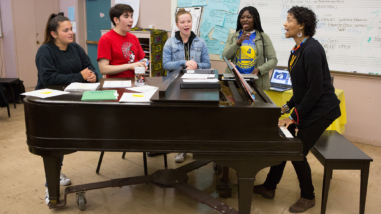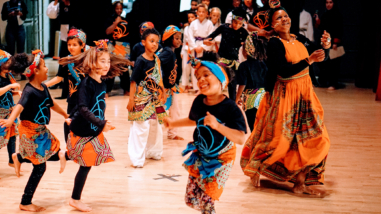Creativity challenge: The state of arts education in California

Several years ago, the Performing Arts Program decided to commission a follow-up study to the 2007 report, which is being released today. Again authored by SRI International, Creativity Challenge: The State of Arts Education in California examines the status of arts education and what has changed since that time. What emerged is a snapshot of arts education in California in 2019/20 school year, the last “normal” year in California schools before the COVID-19 pandemic upended education systems.
This report shows how far California has come — and how very far it has to go — to ensure that all young people in the state have access to a high-quality education that includes the arts. It’s not all bad news. The percentage of schools offering a course of study in at least one arts discipline increased from 71% in 2006 to 79% in 2020. The percentage of schools offering instruction in one to three arts disciplines also increased from 60% to 68% over the same period. But the study also reveals that disturbing inequities persist. For example, the percentage of students receiving arts instruction in the two most common disciplines — music and visual art — was consistently lower in schools serving low-income communities. That amounted to a difference of 22% for music and 28% for visual arts between schools in the lowest income communities and the highest income communities. The picture is especially bleak in court and community schools, whose students are disproportionately students of color, low-income, foster youth, English learners, and students with disabilities. This study was the first to examine access to and participation rates in arts education courses in these school environments. It shows that over two-thirds of court and community schools offer no arts courses in any of the four required arts disciplines.
In 2007, Moy Eng and Mike Smith, who directed the foundation’s Performing Arts and Education Programs, respectively, at the time asked: “Are we willing to lower our standards and view our goals as unreachable — or use this report to spur a commitment to provide high-quality arts education to all students?” This is a question practitioners, advocates, and policymakers must ask again now.
Those of us who have been working for decades in arts education are eager to see such commitment. This moment is not just about the California Education Code or the very real academic benefits that learning in and through the arts can offer all young people. Students desperately need the social and emotional skills that the arts can cultivate to help them navigate personal and global challenges, from disappointment and social anxiety to climate change and an ongoing global pandemic. It is long past time school leaders and policymakers recognize the essential role that art must play in the education of California’s young people.



